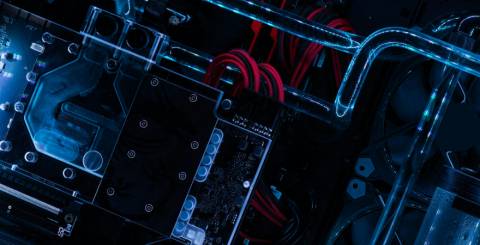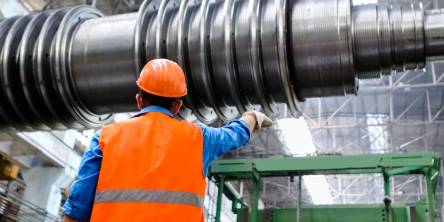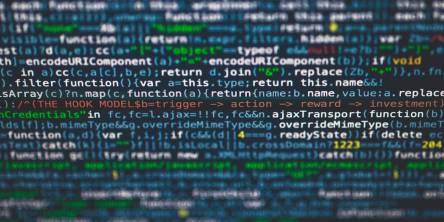Unlocking the Secrets of Heat Distribution with Advanced Imaging

In today's technologically advanced landscape, understanding heat distribution is critical for enhancing efficiency and safety across various sectors. Infrared thermography, a pivotal imaging technique, has revolutionized how professionals view and analyze thermal performance. This non-contact, non-destructive method captures thermal images or heat maps that reveal temperature variations across surfaces—information crucial for identifying potential problems before they lead to failure. Industries ranging from electrical and building inspections to automotive systems and healthcare benefit from the detailed insights provided by this advanced imaging technology, making it an indispensable tool in their operational arsenal.
Tip 1: Calibrate Your Equipment Regularly
Accurate thermal imaging depends heavily on the precision of infrared cameras. Calibration is the process of setting these cameras to a standard temperature scale to ensure they provide true temperature readings across their entire operational range. This step is essential not only for achieving reliable results but also for maintaining consistency in repeated measurements over time. Technicians should perform calibrations periodically or whenever the camera is subjected to mechanical stress or significant temperature changes, as these factors can drift the calibration.
Tip 2: Optimize the Environmental Conditions
The environment plays a significant role in the accuracy of infrared thermography. Variables such as ambient temperature, humidity, and air movement can influence thermal readings. For example, high humidity can lead to condensation on surfaces, affecting emissivity and thermal readings. To mitigate these effects, it's crucial to control environmental conditions by using dehumidifiers, maintaining a constant room temperature, or isolating the area from external air currents during measurements. This control helps ensure that the thermal images reflect true surface temperatures without interference from external factors.
Tip 3: Select the Appropriate Emissivity Settings
Emissivity is a material’s ability to emit infrared energy compared to an ideal black body, and it varies between different materials. Getting the emissivity setting right is crucial for accurate temperature measurements. Many infrared cameras come with adjustable emissivity settings or presets for common materials. However, for unusual or coated surfaces, conducting emissivity tests to determine the correct settings is essential. Failing to adjust emissivity when moving from metal to wood, for example, could significantly skew the thermal readings, leading to erroneous assessments.
Tip 4: Use Qualitative and Quantitative Analysis
Thermal imaging provides both a visual overview and detailed data. Qualitative analysis involves visually inspecting the thermal image for patterns that indicate heat issues, such as hot spots or uneven distribution. Meanwhile, quantitative analysis involves measuring the exact temperatures of specific areas in the image to make detailed comparisons or track changes over time. Effective use of both approaches allows for a more thorough understanding of thermal issues, aiding in both immediate problem-solving and long-term monitoring.
Tip 5: Implement High-Resolution Cameras for Detailed Imaging
The resolution of an infrared camera directly affects the amount of detail in the thermal images it produces. Higher-resolution cameras have more pixels, which means they can show a clearer picture and detect smaller temperature differences. This is crucial in applications where precision is key, such as detecting hairline cracks in materials or early signs of overheating in electrical components. Although high-resolution cameras are more expensive, their ability to prevent equipment failure and save costs on repairs often justifies the investment.
Tip 6: Integrate with Other Diagnostic Tools
Infrared thermography is powerful but combining it with other diagnostic techniques enhances its effectiveness. For instance, using ultrasonic testing can help detect gas leaks that are not always visible on thermal cameras. Vibration analysis can indicate misalignments in machinery that might be causing extra friction and heat, while moisture meters can help identify damp areas that could lead to mold or corrosion. This holistic approach to diagnostics not only ensures more accurate assessments but also aids in comprehensive maintenance strategies that prevent future issues.
Tip 7: Train Personnel in Image Interpretation
The effectiveness of thermal imaging is contingent upon the ability of personnel to accurately interpret the results. Inadequate training can lead to misinterpretation of thermal images, resulting in misguided decisions that may exacerbate existing problems. Comprehensive training programs should include instruction on the physical principles of thermography, camera operation, and specific case studies that highlight common issues and their thermal signatures. Ensuring that all personnel are proficient in these areas will enhance the reliability of diagnostic procedures and the decision-making process.
Conclusion
Infrared thermography is more than just a tool for detecting heat; it's a critical component of modern diagnostic and maintenance strategies across multiple industries. By adhering to these tips, professionals can greatly enhance the utility of their thermal imaging techniques, leading to smarter, safer, and more efficient practices. As technology evolves, the role of infrared imaging in effective heat distribution management will continue to expand, making it an ever more vital skill in the arsenal of industry professionals.
Similar Articles
Amazon Simple Queue Service (SQS), Simple Notification Service (SNS), and EventBridge are just a few of the messaging services that AWS provides to meet various demands when it comes to creating scalable and effective cloud systems.
Wearable technology, embracing devices small enough to be worn unobtrusively, constitutes a market that keeps expanding, and the momentum shows little sign of slowing
For job seekers, grasping the basic functions of Applicant Tracking Systems (ATS) is the first step in overcoming common job search barriers.
In the highly regulated world of pharmaceutical manufacturing, inventory management is far more than just tracking stock levels. It’s a critical component of ensuring product safety, quality, and compliance with current Good Manufacturing Practices (cGMP)
Find a reliable sealing technology with these 7 tips on quality, materials, certifications, and scalability to ensure lasting performance in your industry.
These days, your business depends on strong telecom systems and well-built software to stay ahead. Whether you’re launching a digital product or improving your communication tools, choosing the right team to work with makes a big difference.
Sometimes it seems like walking on a tight-rope when it comes to talking openly in team chats.
Learn how .NET Web API supports scalable architecture. Explore real-world best practices in .NET development for building high-performance, reliable endpoints.
Learn how to spot real fast USB-C charging by checking 4 key specs—output power, protocols, cable compatibility, and smart power distribution.









